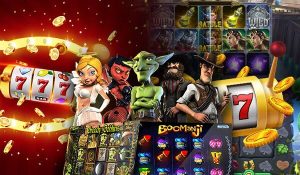What is web 3.0? Web 3.0 is the next iteration of the Internet, and it will likely have far-reaching effects on our relationships with machines and one another. Many corporations are pondering how to make money from web 3.0. So, should we expect a bubble or a balloon regarding Web 3.0? It’s understandable that, despite the successes of web 3.0 startups, many people are still skeptical of the ecosystem as a whole, given our collective experience with bubbles like the dotcom bubble of the 2000s.
With decentralized advertising, NFTs, crypto tokens, and other novel revenue streams, Web 3 is an exciting new frontier for companies that have outgrown web 1.0 and web 2.0. Investors continue to invest more money into web3 startups because of their incredible opportunities. Web 3.0 will be the standard in the future because of developments like telecommuting, digitalization, globalization, web3 game development, and more.
Main Components of Web 3.0
Web 3.0 is more robust and user-focused than its predecessors. It’s undeniably more cutting-edge in terms of technology. The following are some of Web3’s essential features:
Semantic Web
In Web 3.0, you’ll find the technologies and tools that give computers the same intelligence as humans in processing and understanding information. Metadata is essential to the operation of the Semantic Web. These are additional characteristics of the material that has already been created. They aid in the analysis of the data by machines.
Artificial Intelligence (AI)
Artificial intelligence (AI) is a central feature of Web3 and is integrated into nearly every platform aspect. Artificial intelligence (AI) is used extensively in today’s web-based apps and services because it enables computers to mimic how humans perceive and process data.
3D Interactive Web
New web culture incorporates 3D graphics and full immersion into the browsing experience. Technologies constitute a significant portion of contemporary digital web design. Graphics can be manipulated in various ways, such as by turning, spinning, or zooming in. It completely revolutionizes traditional digital entertainment, education, and commerce.
Ubiquity
In Web 3.0, you can go online no matter where you are. Connected devices like laptops, smartphones, and Internet-of-Things (IoT) sensors are necessary for Internet access.
The Social Web
This characteristic, borrowed from the World Wide Web 2.0, describes a system that puts the focus on its users and encourages them to create and distribute their content. There’s a review feature as well.
Decentralized Technology
Finally, decentralized technology is used in Web 3.0, so no central hubs are necessary for its operation. It’s a major upgrade from creating simple websites in the 90s. These are the elements that make up decentralized systems:
Blockchain: Information in a distributed ledger is stored across multiple nodes, making it practically impossible to delete accidentally.
Smart contracts: A contract will be automatically executed when certain conditions are met.
NFTs: Tokens representing non-fungible assets carry information about the rights associated with those assets.
Web3 can be described as decentralization, individualization, and pervasiveness. The advantages of Web 3.0 for corporations will be discussed in the following section.
How Can Web3 Help People Generate Revenue?
Products on Web3 marketplaces shouldn’t be priced in volatile cryptocurrencies like Ether (ETH). A customer of Uber would prefer not to pay more for their ride just because the price of ETH fell. On the contrary, the cryptocurrency industry should adopt 1:1 collateralized stablecoins such as USDC. Stablecoin payments denominated in US dollars allow for attractive price cuts while supporting primary market growth. For instance, a staked amount of tokens may entitle a DAO member to a discount on products.
What Can Web3 Offer Businesses That Earn Revenue?
Web3 blockchain protocols are programmable, opening up new business revenue management possibilities.
Split Revenue
Commission, revenue sharing, and loyalty rewards can all be distributed more honestly using blockchain technology. A payment protocol can redistribute a company’s earnings in a trustworthy manner once those earnings have been collected.
We can eliminate the need for reliable go-betweens in complex financial transactions involving several parties. Customers can be automatically rewarded with subscriptions, discounts, and other perks thanks to the ability to program these features. Ultimately, businesses, suppliers, and employees can rally around a cascade of revenue generated by a network of wallets used to drive profits generated by the observable financial activity.
Process Refunds
New forms of automated escrow, release, and adjustment may also emerge due to Web3 payment protocols. Smart contracts can provide solutions based on predetermined rules when payment errors occur, such as incorrect data entry or a customer’s request for a refund.
Advance Cash
Companies with a track record of on-chain revenue from their clientele can sell their invoices at a discount to those in the market to front the cash in exchange for a quick return. Although invoice discounting and factoring are crucial in international trade, traditional financial institutions limit access to these services to the wealthy. After a transaction is processed on the blockchain, any wallet holder can take advantage of the available factoring options. The return results from an investor receiving a rebate because they cashed out early.
The current basis of DeFi needs to be replaced with real-world revenue. It can’t be about quick profits, trading, and yield farming anymore. For Web3 to generate a sustainable financial ecosystem, we need to use real-world revenue as fuel. Specifically, we need to start wondering how it can improve people’s lives. How does Uber function in the third generation of the Internet? Where exactly does one go to buy applications designed for Web3? The ship can be steered back on course when these questions are answered.
Successful Web3 Business Models
Reserve NFT Model
If you have 10,000 NFTs in your collection, you should hold back 1,000 at the outset and sell the rest at a discount.
The next step is to create a group that can keep its members and thus its value. The NFTs can be released from the reserve when the project requires funding.
Larva Labs successfully implemented this strategy with their CryptoPunks series.
Secondary Token Model
When your NFT community and coin collection are well-established, you can introduce a second type of token.
For instance, ApeCoin was used by the Bored Ape Yacht Club to introduce the Mutant Ape Yacht Club.
NFT Model Based on Subscription/Membership Fees and Profit Sharing
As a creator, you must come to terms with the fact that many of your audience members are interested in doing nothing more than consuming your work.
They are not interested in collaborating on a project, providing assistance with advertising, or developing a new product. Nobody gives a hoot about DAOs or any of your other Web3 innovations.
Therefore, the precedent models are only appropriate for that target demographic. If you release a limited edition NFT collection, people will buy it, too. After all, they want to work with you on a project because they think its value will rise in the future.
Then the demand for your token dries up because its price is too high, effectively excluding a large portion of the population from participating in your community.
Because of this, your potential clientele could be much better.
Fortunately, you can choose both options.
Roll out an NFT collection for those who want to grow and develop alongside you, and introduce a Web2-based subscription for those who want to buy what you create.
In exchange for assistance in building your site, advertising your products, and producing content for your Web2 audience, you can offer a cut of the revenue generated from your Web2 membership/subscription audience to the Web3 community.
Cohort-Based NFT Membership Model
Lastly, we have NFTs based on cohorts and take advantage of supply/demand and fear of missing out.
Let’s pretend you decide to offer a premium subscription tier for your newsletter through Substack, and your goal for the first release is to sell 500 subscriptions at $5 per month.
Launch a second release (cohort) at $10 per month if that sells out, and your audience keeps growing.
The monthly membership fee is increased whenever a new batch of products is sold out. If you continue to distribute the same value to all of your holders as you raise rates, the value of the NFTs you purchased with your first release will rise. Some people pay $5 per month, while others pay $10, etc.
The Final Thoughts
Creators in Web3 have rights to their work but are still determining the systemic implications of this ownership. A noncustodial wallet, which allows users to retain custody of their private keys, is crucial to the success of Web3 enterprises. Lastly, to ensure that Web3 does not repeat the failures of Web2, we must build trust and incorporate multiple protocols. However, Web3’s low-code and no-code alternatives are the most important resources for tackling these complex challenges and assisting enterprises in making future advances in this area.
Leveraging the expertise of a web3 development company in managing the web3 infrastructure can help developers and businesses take advantage of its many useful features, such as security, decentralization, data privacy, and more.
Using blockchain technology for data storage, scalable platforms for deploying smart contracts, deploying DeFi, and running dApps to promote more decentralization, Web3 will reimagine the Internet as a business.




















+ There are no comments
Add yours